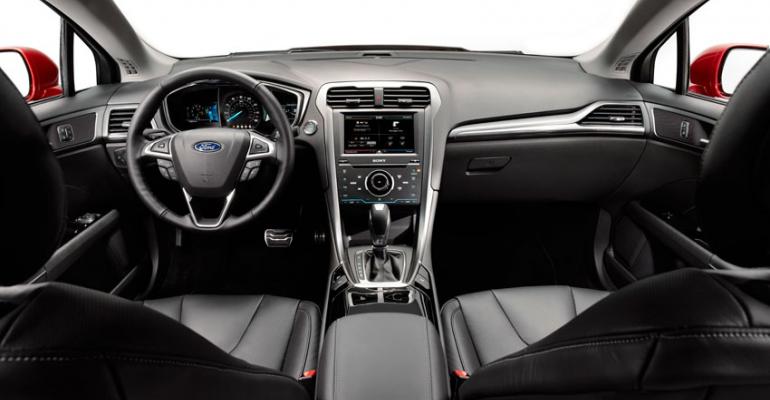DEARBORN, MI – Light-emitting-diode technology assumes a large role in Ford’s vehicle-interior strategy, accounting for all lighting inside the upcoming ’13 Fusion.
The auto maker first used the technology to a limited degree inside the’03 Lincoln Navigator. Since then, LEDs have migrated to nearly every model in Ford’s portfolio, with applications increasing.
While LEDs are pricier than traditional incandescent lighting, cost is made up in other ways, Mahendra Dassanayake, technical leader for design, tells WardsAuto.
LEDs last considerably longer than incandescent lights, reducing warranty issues and bolstering perceived quality, he says. Additionally, the technology allows for greater packaging efficiency and is more energy-efficient, leading to further cost savings.
The lighting also serves as a design element, because LEDs can be molded into various shapes, the auto maker says.
And there are other benefits. Ford’s interior LED default color is ice blue, a choice Dassanayake says was extensively researched and chosen for its ability to keep drivers focused, making it easier for them to absorb other messages coming from inside the vehicle.
Ford was able to identify the effects of ice blue on people through scientific methods. The brain “does not see color,” Dassanayake says, but rather a form of electromagnetic energy with varying wavelengths.
“Light is like a pond, with ripples as the wavelengths,” he explains. “These ripples form and reflect and interact with each other. The sensation between them is what people perceive as colors.”
On a more technical level, certain combinations of light trigger enzymes in the brain, which cause emotional responses such as stress, calmness or happiness.
Despite the benefits of ice blue, the interior lighting of the Fusion and other Ford vehicles can be switched to purple, blue, orange, red, white or green. Each color elicits a different response, Dassanayake says, citing the calming effect of green and the emotional impact of red.
Michael Arbaugh, interior chief designer, says the ’13 Fusion’s cabin has been crafted to enhance the perception of quality. It also was designed with a modular approach so it can be adapted for global markets.
To accommodate regional preferences, the flagship sedan’s interior trim pieces and certain seat sections are designed to be swapped out for different colors and finishes, Arbaugh says. In China, for instance, most Fusion interiors will have lighter colors, while Europeans prefer darker shades. In the U.S., it’s usually a mix of the two.
Such attention to detail drove the development of the next-gen sedan, which arrives at U.S. dealerships later this year. Another example is that Ford research found drivers tend to splay their legs on long trips, leaving the right leg pressed up against the side of the footwell.
Arbaugh says driving in that position can prove uncomfortable over time, so designers shaped the footwell to be more comfortable and covered it in a soft material. Another touch is the tactile material on the volume knob and a forward-angled center console that creates a sportier feel.
Ford also has added a large space in the center console with a 12V outlet, where cell phones can be charged without cluttering up the interior.





